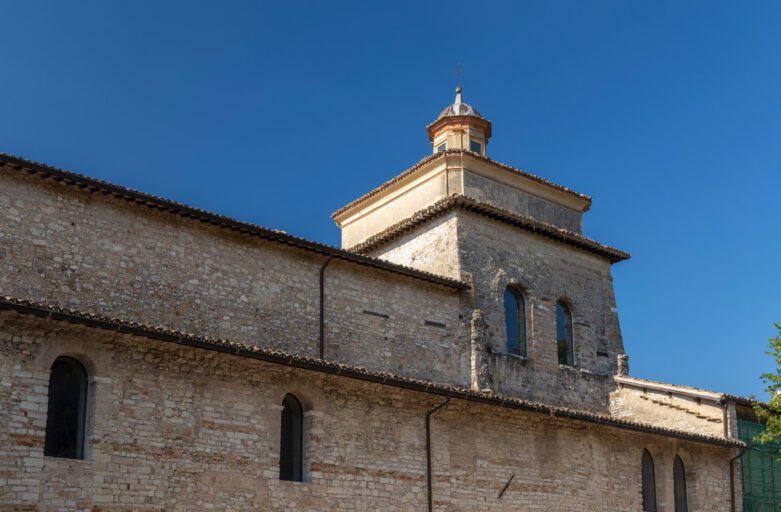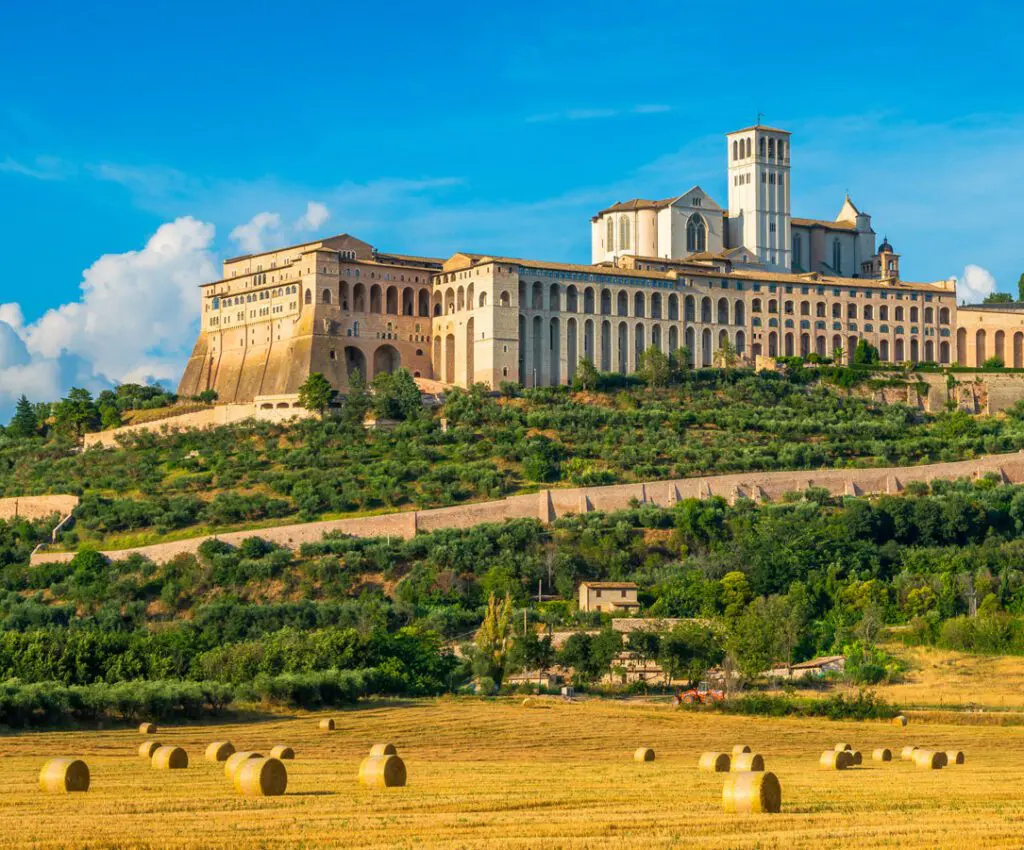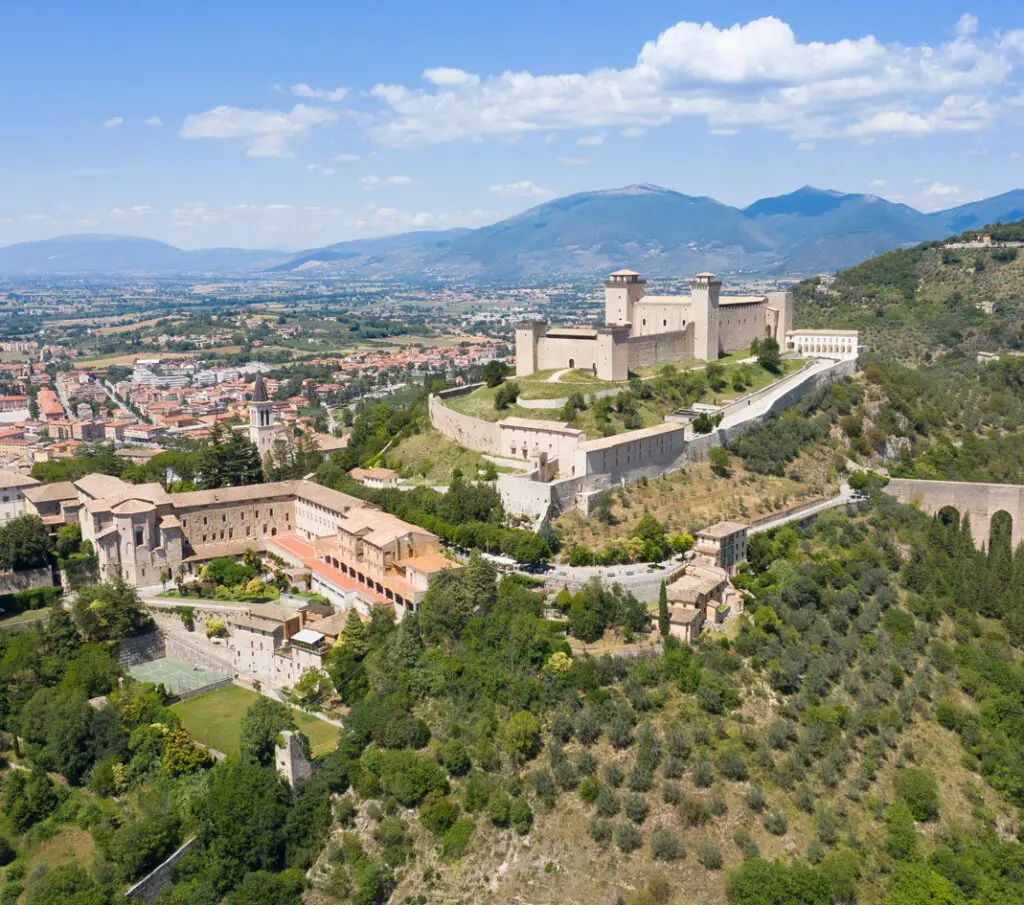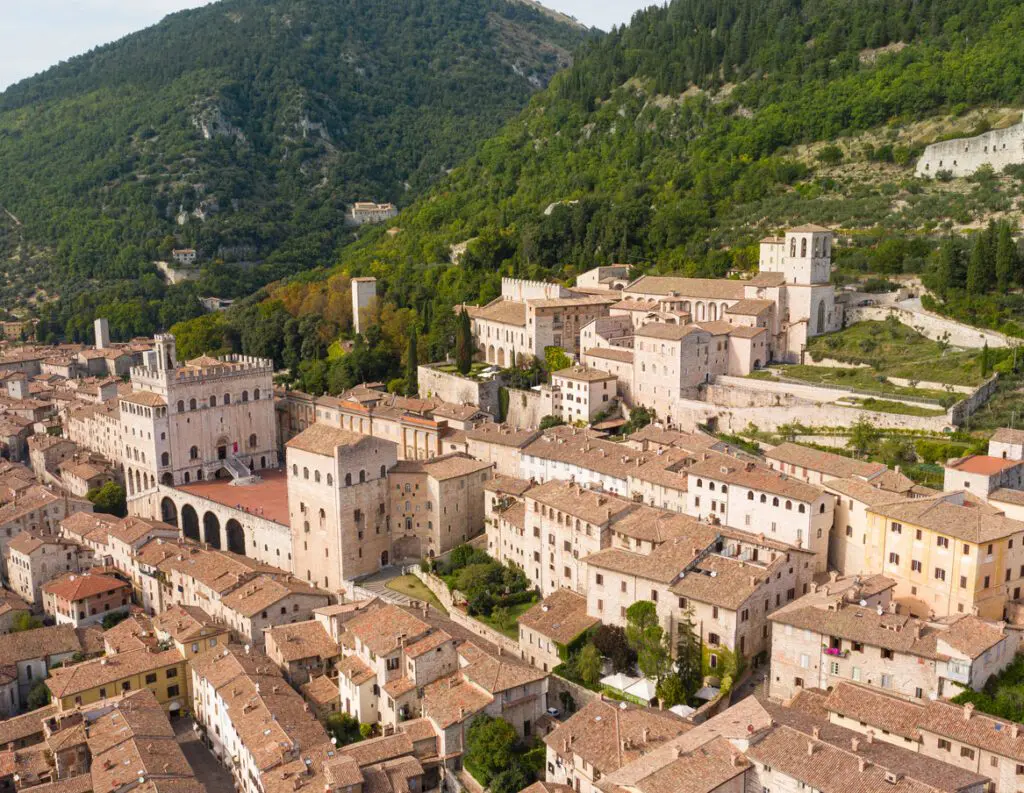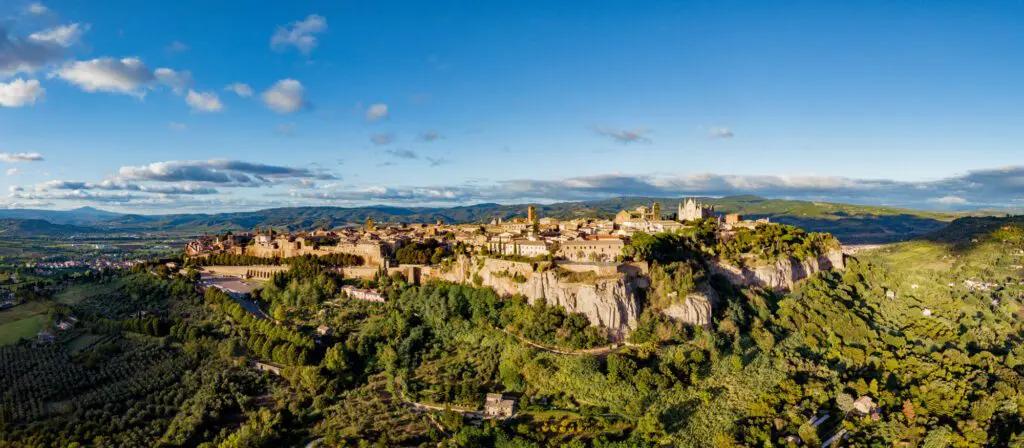The Cathedral of Spoleto is a building so powerful in its beauty that will impress all those who take the staircase that suddenly opens up among the alleys. However, do not trust the first impression, in fact, it is not only a unique setting, but also and especially a place where the tracks of time can be detected.
The Cathedral of Spoleto during the centuries
The construction of the Cathedral of Spoleto goes through the centuries, starting from the last period of the Lombard domination, between the eighth and the ninth centuries. The church is later recorded in 956 as Santa Maria al Vescovo. Not by chance so, since precisely in this area on the edge the town walls, Spoleto's religious nucleus had developed, including the bishop's palace, but also the relics of Saint Primiano and the Sant'Angelo Church.
Since 1069, however, it is possible to identify the Church with the function of a cathedral (“The mother church of the Spoleto Bishop's territory,” as document reports). Architectural volumes were modified in the 12th century to build a bigger church. After its consecration by Pope Innocent III in 1198, the cathedral was completed in 1216 and dedicated to Virgin Mary's Assumption.
The human signature in the divine: the works of master Sostegno and Alberto Stio
In 1491 the Renaissance covered walkway was added. It inserts itself onto the Romanesque façade, where a shining mosaic shows Christ Blessing, between Virgin Mary and Saint John made by Master Solsterno in 1207. A curiosity: paying closer attention to Jesus, it is possible to notice that in his right hand, the blessing one, the tips of thumb and ring finger touch each other. The gesture came from Byzantine art and is rich in symbolic meanings. In addition, in the mosaic the artist's name and the date are included, a detail that was absolutely not common at that time. Here man signs his work as he wishes that his name may last in time.
Another artwork, preserved inside the cathedral, is dated and signed: the Crucifixion painted by Alberto Sotio in 1187, painted on parchment and glued on a modeled panel. This work is unique for many reasons; in particular, it is one of the oldest examples of a painted cross and, precisely, it is among the very rare 12th century works that display the artist's name and the date.

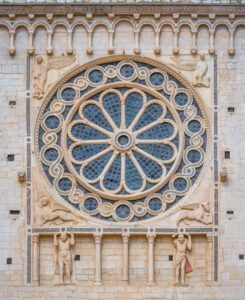
Architectural changes
More works in the cathedral carried on in the following centuries. In the late 14th century, Bishop Galardo commissioned the decoration of the inside walls with a set of frescoes, now lost, with Episodes from the Old and New Testaments, beside episodes from the lives of some saints referring to Spoleto.
The big architectural upsetting, however, took place inside the Cathedral between 1638 and 1644 by decision of Cardinal Francesco Barberini (1597 - 1679), nephew to Pope Urban VIII (Maffeo Barberini), who in his turn had been the Archbishop of Spoleto from 1608 to 1617. The 17th century changes, carried out by an architect from Florence, Luigi Arrigucci (1575 - 1647), would completely hide the Romanesque structure. It was only saved the enchanting floor in the central nave, in Cosmatesque motifs made of pieces of porphyry, serpentino (green marble), and stone.
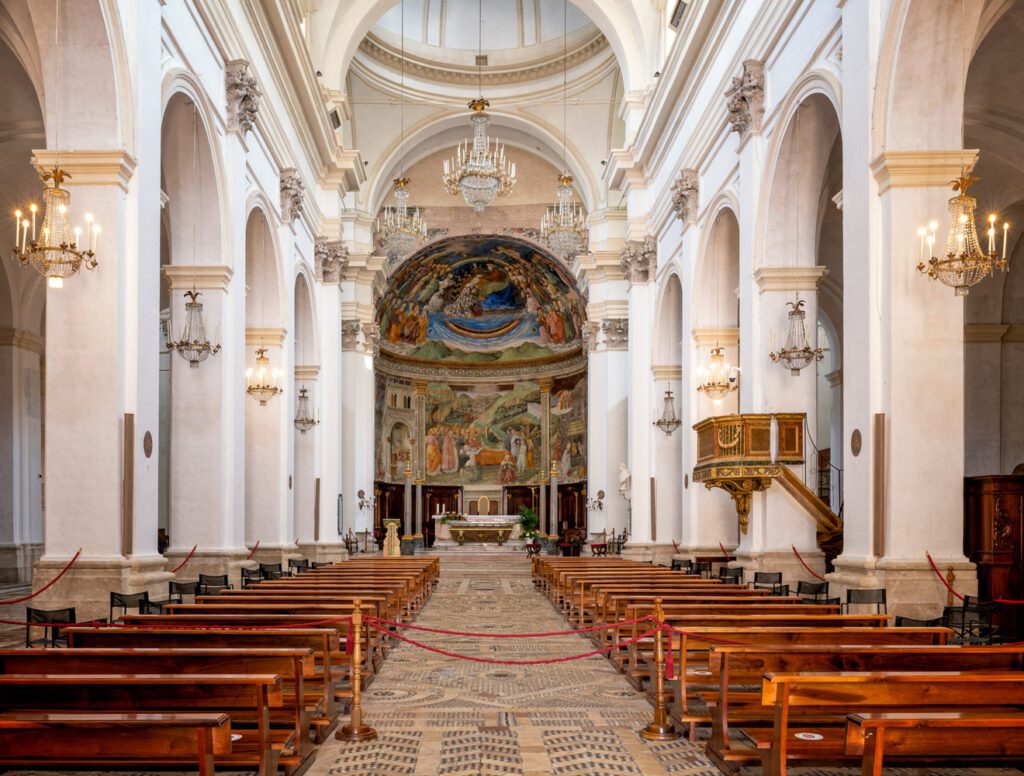
On the footsteps of the Renaissance
Filippo Lippi
Already in the 15th century the church had been re-decorated and updated according to the artistic trends of that period. A famous and much requested artist from Florence, Filippo Lippi (1406 - 1469), was commissioned to work in the apse section between May 1467 and his death, in October 1469. The apse is frescoed with episodes from the life of Virgin Mary, to whom the church is dedicated. The cycle comprises four main scenes: the Annunciation, Christ's Nativity, the Dormitio Virginis (Mary's death, but literally her “sleep”), and the Crowning in Glory.
Lippi's remains were buried right inside the cathedral, so that the artist and his work will be bound forever. The Lord of Florence, Lawrence the Magnificent, had a sepulchral monument built to honor him. The painter's son, Filippino Lippi, who had already started his own career as an artist, designed his father's tomb and his memory was celebrated in verse by Agnolo Poliziano.

Pinturicchio
Bishop Eroli's chapel in the cathedral's rightward nave was frescoed in 1497 by an Umbrian artist, Bernardino di Betto, mostly known as Pinturicchio, who had come back to his homeland after working in the Papal Apartments in Vatican. In the vault, God the Father is portrayed; on the wall, a group with Virgin Mary and the Infant Jesus, between Saint John the Baptist and Saint Leonard, is surrounded by a lake landscape. However, what may look like a plain, sober picture at first sight, actually hides many interesting details to be found out personally.

Little curiosities inside the Cathedral
Inside Spoleto's cathedral, it is also worth having a look at an icon with the picture of Virgin Mary, a gift by Emperor Frederick Barbarossa to the town as a peace sign in 1185 and the Chapel of Relics, built in the area of the ancient Church of Saint Primiano. Here, in one of the 16th century closets decorated with Prophets and Sibyls, a letter hand-written by Saint Francis of Assisi is kept.
INFO
Location
Piazza del Duomo, 2, 06049 Spoleto PG
Guided Tours Schedule
1 March - 31 October
Monday - Saturday:
10:30 - 18:00
Sundays and holidays:
12:30 - 18:00
1 November - 28 February
Monday - Saturday:
10:30 - 17:00
Sundays and holidays:
12:30 - 17:00
Contacts
info@secretumbria.it



